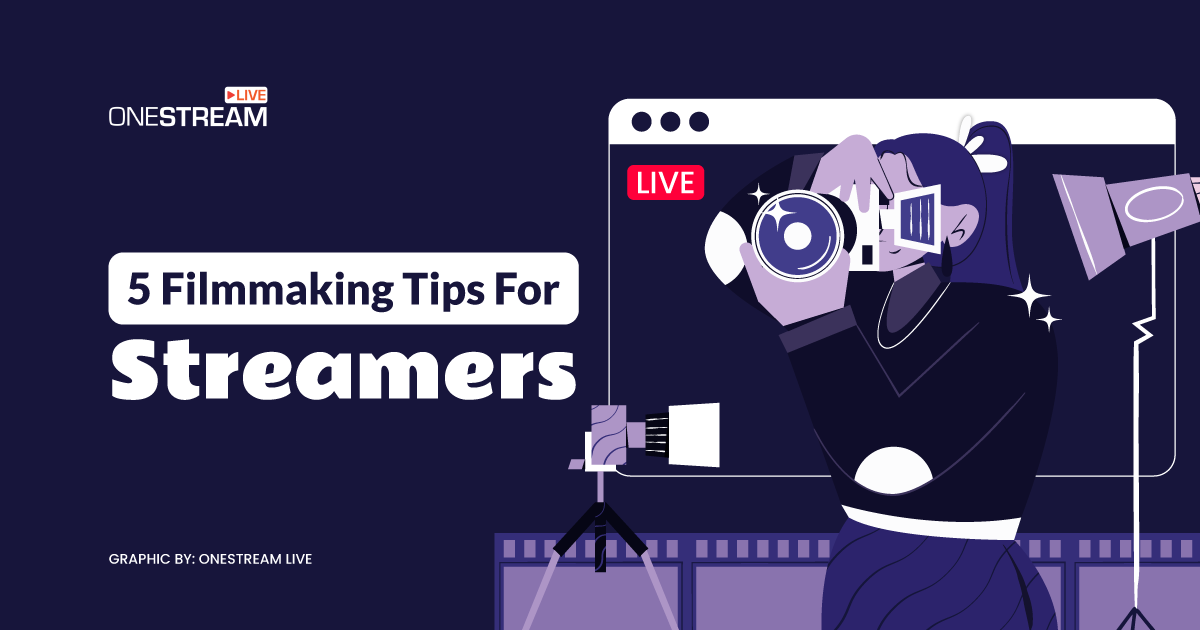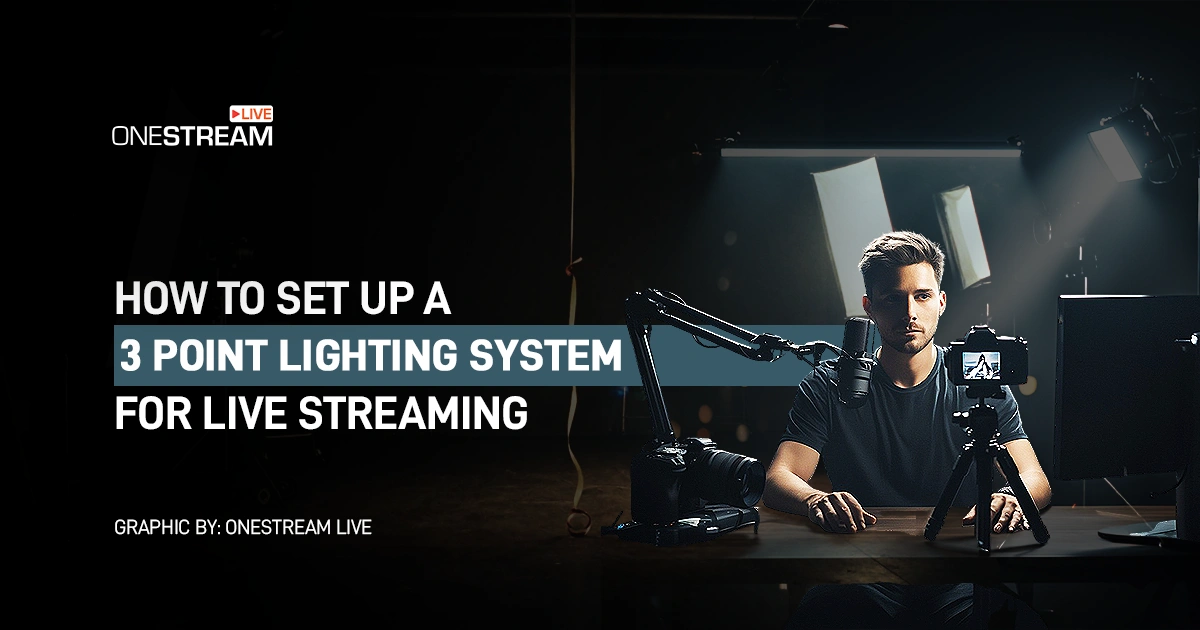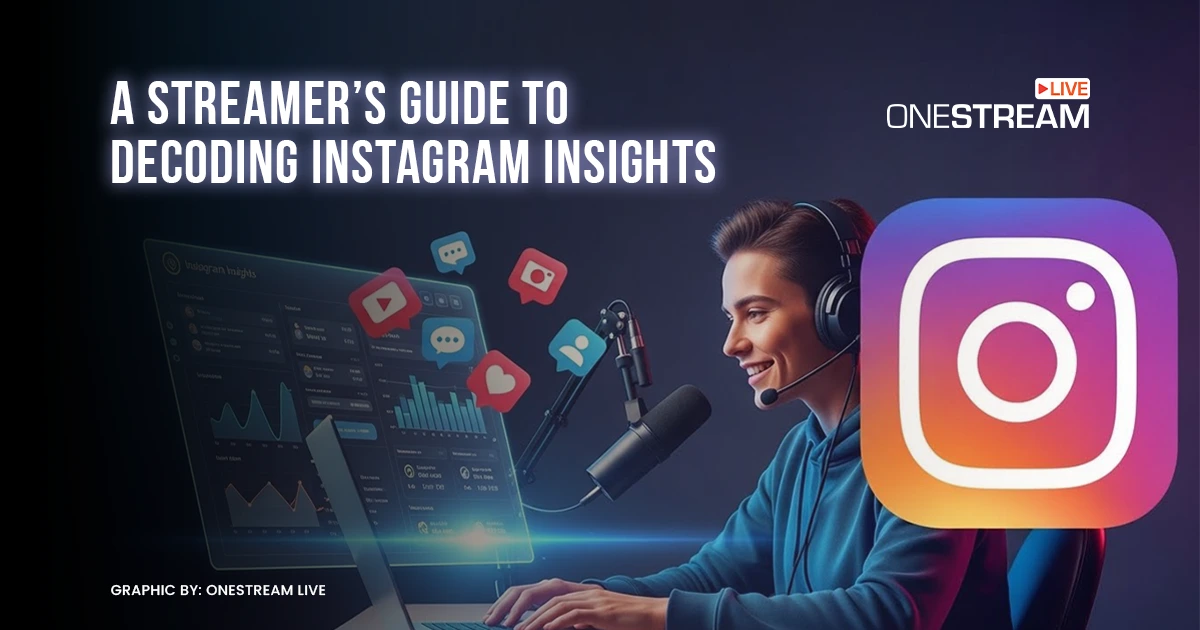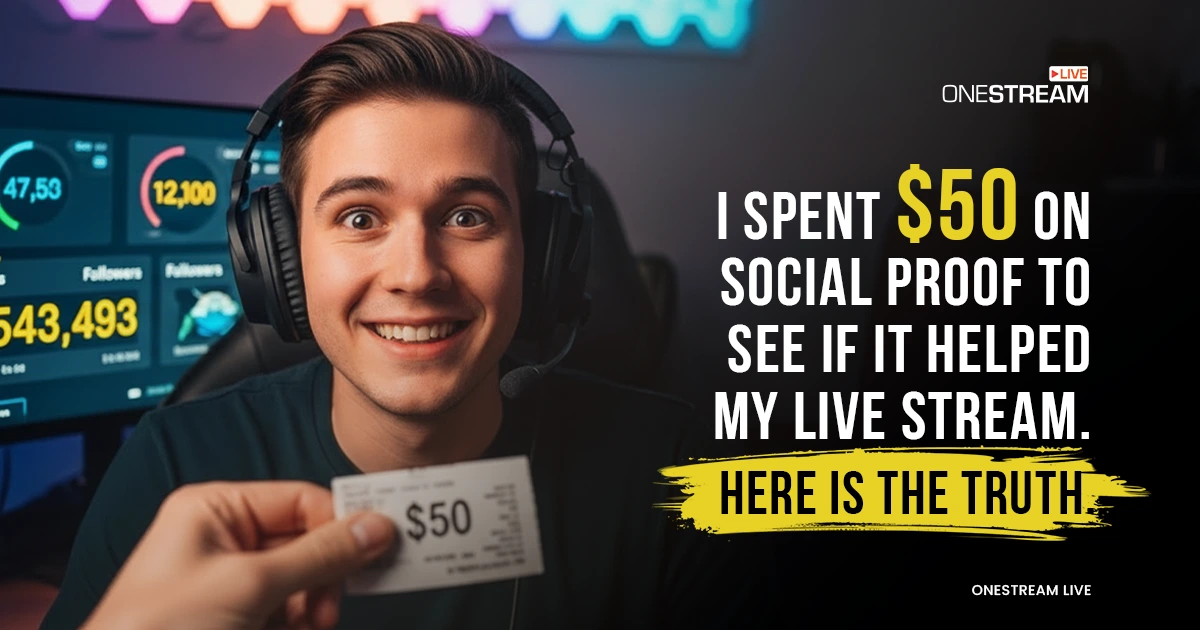Step up your streaming game by following the top filmmaking tips and secrets filmmakers use in their movies. Not only are these helpful for achieving aesthetically pleasing shots, but there’s a whole reasoning behind their use and effectiveness. We’ll go through five basic video making tips for streamers that will boost the quality of your streaming content.
Filmmaking Tips for Streamers That Work
Streaming is not just about hitting the “go live” button; it is about engaging your viewers in telling a story with every frame. Whether you’re new to streaming or looking to improve your streaming content, these filmmaking tips for streamers will help you to improve the quality of your videos.
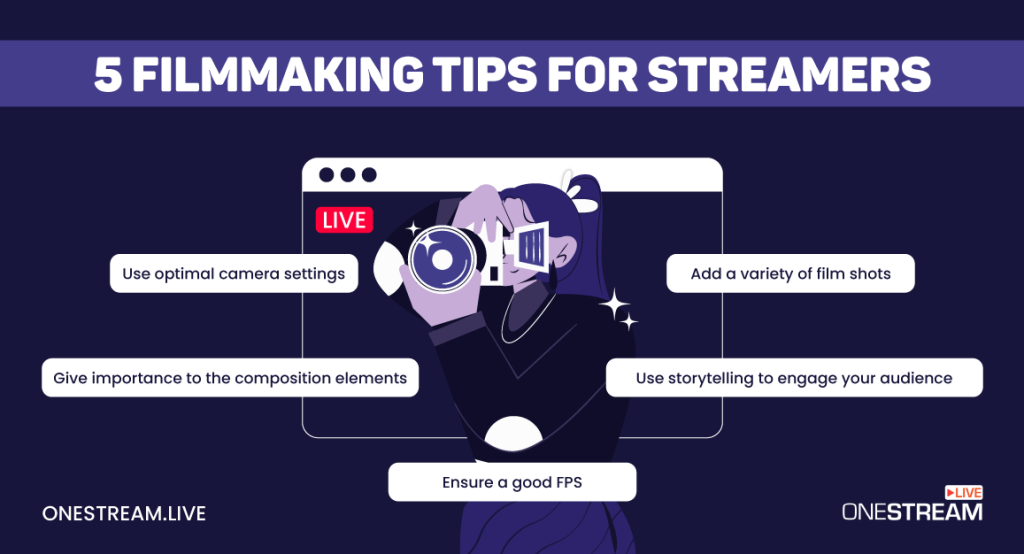
Everything is Storytelling
The Composition
Now that you’ve decided which elements will be part of the story you’re telling let’s decide how to arrange them.
Composition in film is exactly that: the distribution of a variety of elements within a shot. The aim is usually to achieve harmony and balance between them.
Pay attention to framing, lighting, and camera angles to convey the right mood and message in your streams. Incorporating these cinematography tips can significantly enhance your composition skills, which will enable you to create more visually engaging content.
Some of the basics of filming composition approaches worth getting familiar with include:
- Rule of thirds. It divides the frame evenly into thirds with two horizontal and two vertical lines. Position subjects and objects along these lines to create specific atmospheres, emotions, or emphasis.
- Golden Ratio. Also known as the golden ratio or the divine proportion, it’s a great approach to distribute the elements evenly and give a subtle but effective focus to an object/subject.
- Symmetry. It creates balance and unity in the frame. Asymmetry, on the other hand, can suggest imbalance or movement.
- Leading lines. These are intentionally but discreetly created by the elements of the frame, usually to give depth or suggest a trajectory.
None of these approaches is indispensable, so feel free to experiment with them and choose the one that best expresses your message.
The Frame Rate
What is the frame rate? You may have seen this term before as FPS, which stands for frames per second. The frame rate is how we measure the number of frames that are captured within a second of the recording.
Filmmakers usually shoot at the lowest frame rate, 24 FPS, because they intend to make motion look natural to the human eye. However, when it comes to live broadcasts, the most common frame rates are 30 FPS and 60 FPS because there is more movement going on.
Consider that 60 FPS requires a stronger internet connection, more powerful filmmaking equipment, and a powerful computer. It’s also better only in cases where the movement is really fast-paced. Otherwise, 30 FPS allows better video quality and is a more cost-efficient and steady choice.
Consider that 60 FPS requires a stronger internet connection and more powerful. It’s also better in cases where the movement is fast-paced. Otherwise, 30 FPS allows better video quality and is a more cost-efficient and steady choice.
Types of Film Shots
The most common types of film shots include:
- Long shot. Focus on the location; it is best for open spaces or outdoors.
- Full shot. Focus on your full body.
- Medium shot. Focus on your body from the waist up.
- Medium close-up. Focus on your shoulders up.
- Close-up shot. Focus on your face.
- Extreme close-up shot. Focus on a specific feature or object.
Wide shots with open frames allow for more movement and context. A shorter frame creates intimacy.
If you’re streaming movie reviews or makeup tutorials and want to display the tools, posters, and decorations around you, try a wide frame.
But if you’re streaming Q&As, a short frame is a great choice so the audience feels closer to you. Also, for horror-related storytelling it can make the viewers feel tense and on edge.

The Exposure
Controlling exposure is key to achieving the best video quality, making it one of the essential filmmaking tips for streamers.
Achieving the best video quality has a lot to do with the lightning. You have to control the exposure, which is the amount of light that enters the camera.
If you’re streaming outside, it’s all about your camera settings. This can be configured with three main functions:
- ISO. It’s the camera’s sensitivity to light. Lower ISO means lower sensitivity and higher image quality.
- Aperture. It’s the lens’s opening. A larger aperture lets in more light and shows a shallower depth of field. Commercial lenses have a maximum aperture of f/0.95 and a minimum of f/22.
- Shutter speed. A slower shutter speed (e.g., 1/4s) allows more light but reduces image sharpness. For streaming at 30 FPS, use a shutter speed of 1/60.
Lighting Adjustment Tips
When streaming indoors, you can also adjust the exposure by controlling the lighting of the room you’re in. These videography tips might help:
- Avoid ceiling lights, as they are hard to adjust.
- Unless perfect and for short streams, avoid natural light.
- Use various lights strategically to highlight or hide elements.
- Avoid mixing cold and warm lights unless there’s a specific reason for it.
- Experiment with colors to set the room’s tone.
Look at you, Brand New Filmmaker!
You’re officially one step closer to becoming a livestream filmmaker!
These filmmaking tips for streamers are just the beginning. You don’t necessarily need to stick to all of these approaches, tips, and rules. The important thing is to take whatever works for you, let your creativity flow, and support it with proven tools.
Filmmaking techniques are more present than ever in all kinds of video productions. First, it was TV turning into some kind of short-format cinema. Now, it’s online content, and streaming won’t be left behind.
You can track trends and stay up to date with more filmmaking ideas, techniques, and updates on our blog.
OneStream Live is a cloud-based live streaming solution to create, schedule, and multistream professional-looking live streams across 45+ social media platforms and the web simultaneously. For content-related queries and feedback, write to us at [email protected]. You’re also welcome to Write for Us!

